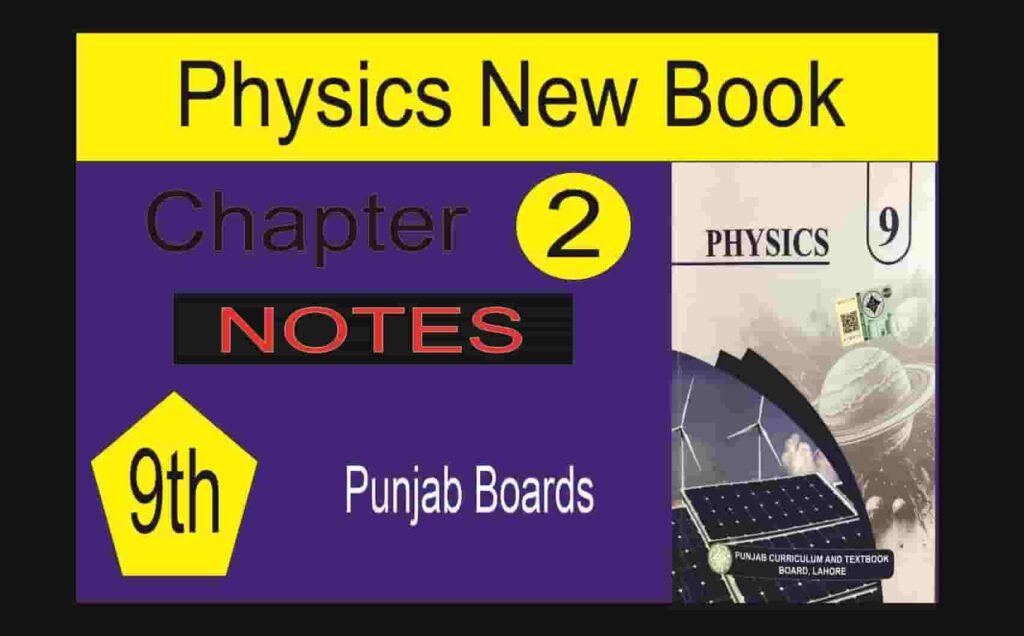Physics 9th 2025 Ch2 Notes
Physics 9th 2025 Ch2 Notes will be checked
Comprehensive Questions Physics 9th 2025 Ch2 Notes
2.1 How a vector can be represented graphically? Explain.
We cannot represent a vector by a ray however, We represent a vector by a line segment with a arrow head on it.
The line segment represents the magnitude of that vector and the arrow head represents the direction of that vector.
The tail represents the initial point of that vector and the arrow head represents the final point as well as direction of that vector.
In the coordinate plane, initial point of vector will be at origin (0,0) and final point (x , y) can be anywhere in the plane.
Usually, We draw a vector from (0,0) to (x , y). In two dimensional plane, we write vector A as A = (x , y) or A = xi + yj
We can also represent a vector by a bold face letter or an arrow head on it.
$$We\;can\;represent\\vector\;A\;as\\\boldsymbol A\boldsymbol\;\boldsymbol\;or\;\;\overrightarrow{A\;}$$
$$We\;can\;represent\;the\\magnitude\;of\;a\;vector\;A\;\\A\;or\;\;\left|\boldsymbol A\right|\;\;or\;\;\left|\overrightarrow{A\;}\right|\;$$
————————————————————————-————————————————————————
2.2 Differentiate between: (i) Rest and motion (ii) Speed and velocity
Rest
Rest means body is not changing its position with respect to its surrounding.
Motion
Motion means body is changing its position with respect to its surrounding.
A book at the table is at rest with respect to the table. A car moving on the road is in motion with respect to a man standing on the road.
But, rest and motion are relative concepts. We cannot say that about a body is completely in rest or in motion.
For example, a man in a moving train is in rest with respect to another man in the same train but both the men are in motion with respect to another man standing on the platform.
————————————————————————-————————————————————————
2.3 Describe different types of motion. Also give examples.
Generally there are three types of motion. 1 Translatory motion 2 Rotatory motion 3 Vibratory motion.
1 translatory motion:
Motion is translatory motion if every particle of body moves uniformly in the same direction. For example motion of car or train. There are three types of translatory motion.
1. Linear Motion : If the body moves along the straight line, it is called linear motion. for example a freely falling body.
2. Random Motion : If the body moves along an irregular path , the motion is called random motion. for example the motion of bee is random motion.
3. Circular Motion : Motion of the body along the circle is called circular motion. For example Ferris wheel.
2 Rotatory Motion :
Motion is rotatory motion if each point of body moves around a fixed point. For example motion of electric fan and motion of top.
3 Vibratory Motion :
Motion is vibratory motion if body repeats its to and fro motion about a fixed point. For example the motion of a pendulum.
2.4 Explain the difference between distance and displacement.
The distance is the length of actual path of the motion while displacement is the shortest length.
[table “11” not found /]2.5 What do gradients of distance-time graph and speed-time graph represent? Explain by drawing diagram.
Gradient is the measure of slope of line . Gradient of distance time graph is equal to the average speed of the body while gradient of speed time graph is equal to the acceleration of the body.
$$Slope=\frac{RQ}{PR}\\\;\;\;\;\;\;\;\;\;\;\;=\frac{S_2-S_1}{t_2-t_1}\\\;\;\;\;\;\;\;\;\;\;\;\;=\frac St=V_{av}\\Also\\\frac St=\tan\;\theta=slope$$
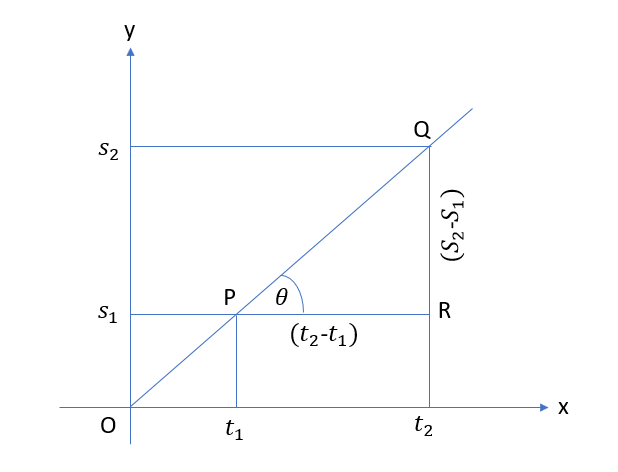
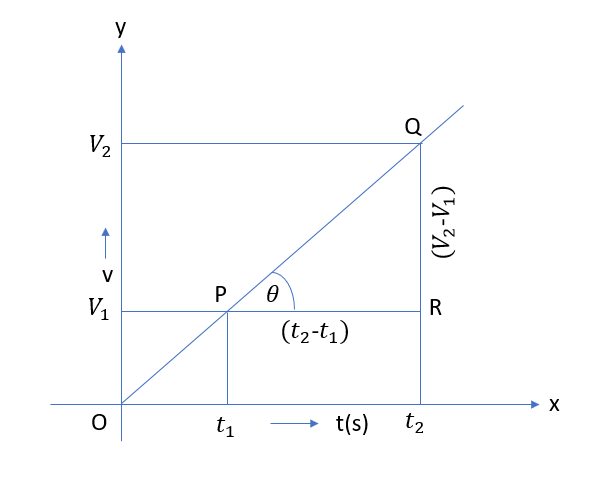
————————————————————————————————————————————————–
2.6 Prove that the area of under speed-time graph is equal to the distance covered by an object.
An object is moving with constant speed v. The distance S covered by the object is the product of speed v and time t. S = vt
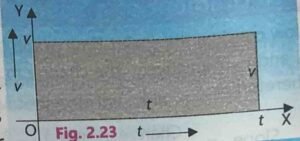
The area under the graph for time interval t is the area of the rectangle of sides t and v.
If t is the length and v is the width of the rectangle, then area of that rectangle will be vt because area of rectangle is equal to the product of length and width.
Area of rectangle = v t
Distance = v t
Hence area of rectangle = distance
Lets check it in case of right angled triangle.
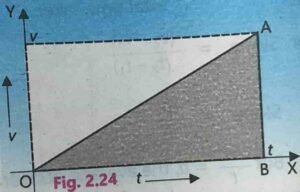
If the speed of an object increases uniformly from 0 to v in time t, then average speed will 1/2 v.
Distance covered = average speed x time
$$S\;=\;\frac12v\;\times\;t$$
Area of right angled triangle is equal to the half of the product of base and perpendicular
Hence area of triangle = distance
Hence the area under the speed-time graph is numerically equal to the distance covered by the object.
————————————————————————————————————————————————–
2.7 How equations of motion can be applied to the bodies moving under the action gravity?
When a body falls freely under the action of gravity of the Earth. acceleration acting on it will be gravitational acceleration denoted by g. So we will replace a by g and due to height distance S by h.
g will be positive in downward direction and negative in the upward direction
$$g\;=\;9.8\;m\;s^{-2}$$
But for our convenience we will use
$$g\;=\;10\;m\;s^{-2}$$
1st equation of motion
$$v_f=v_1+\;a\;t\\\\For\;freely\;falling\;object\\\\v_f=v_1+\;g\;t$$
2nd equation of motion
$$S\;=\;v_i\;t\;+\;\frac12\;a\;t^2\;\\\\For\;freely\;falling\;object\\\\h\;=\;v_i\;t\;+\;\frac12\;g\;t^2$$
3rd equation of motion
$$2\;a\;S\;=\;v_r^2\;-\;v_i^2\\\\For\;freely\;falling\;object\\\\2\;g\;h\;=\;v_r^2\;-\;v_i^2$$
———————————————————————————–—————————————————————
Check! Some useful links below
Physics 9th 2025 Ch2 MCQs
9th class Physics new book Ch2 Short question answer
Class 9th Physics new book Ch2 Numerical
You tube Channel Sir Najam
Home Page Notespunjab.com


